Alone with my thoughts I cruised along quiet slender two-lanes. They meandered through the forests and cleared farmlands of the piedmont that connects the downslope of the Blue Ridge Mountains to the coastal plain. While nearly an hour of driving remained, having left the main highway behind, few cars would interrupt my peaceful reverie. Though launched on my journey by the tales shared by acquaintances, no words could have prepared me for what awaited.
Stories about vintage vehicles strewn about forests and festooned with vines and violated by trees tend to deliver far less than promised or hoped for. Not so this time, by a long shot.
Meet the man trapped by a forest of trucks.
Trapped by a forest of trucks
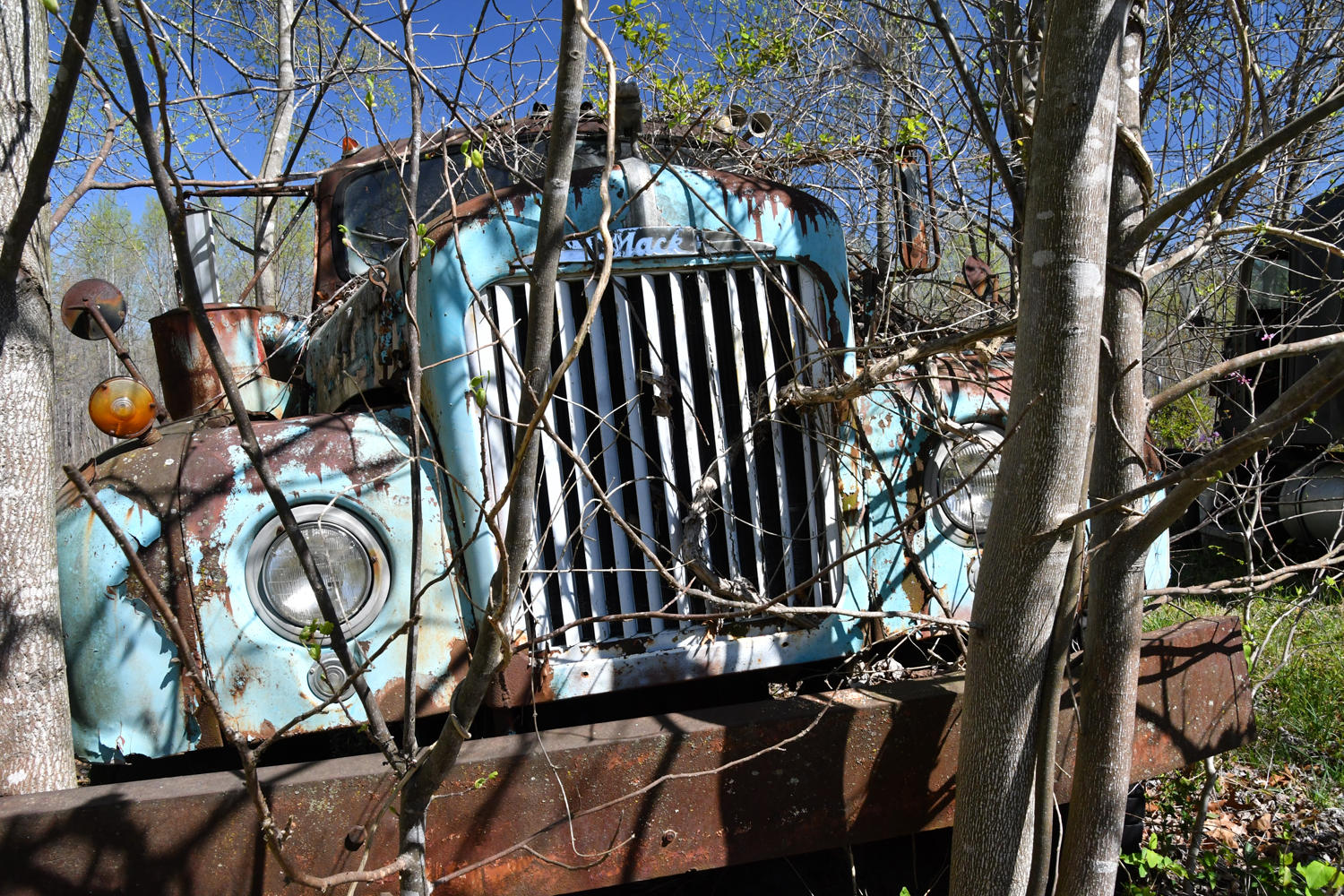
Speaking with me on the phone the day before, Glenn Duncan, President and majority owner of the well respected P.L. Duncan Trucking, had responded to my request to photograph old trucks on his property by welcoming me in a most accommodating country manner. Now I found myself approaching ground zero for the “trucks in the forest” legend.
The soothing voice of my WAZE dashboard Sacajawea said I had arrived as she directed me to take a right onto a rutted dirt road leading to a sprawling farm. Where I am from, to be judged “huge” a field required the space to accommodate a regulation football game. The parcel surrounding this dirt road qualified as “country huge”. That meant it could accommodate a professional football stadium and much of the parking. Shortly I realized that this was one of Glenn’s fields, just not the one I sought.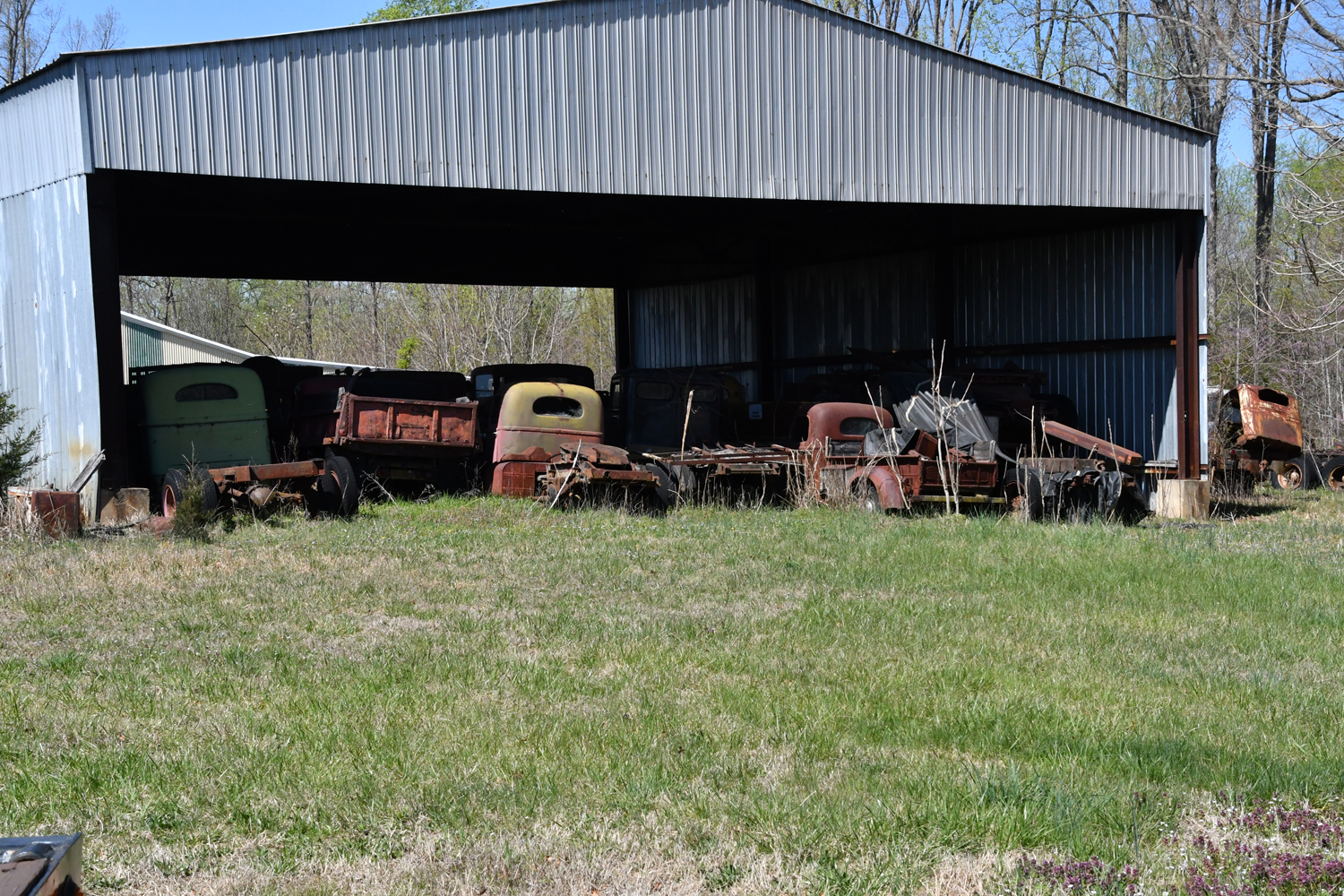
Proceeding further along the main road brought into view an expansive woodland area to my left. A large clearing carved from the forest and populated with a number of huge sheds had at its center a sturdy brick building that had once been a country store. Encircled by a neatly arrayed necklace of rugged semi-tractors from bygone decades, the old store served as Glenn’s office and home to a decidedly personal automobilia collection.
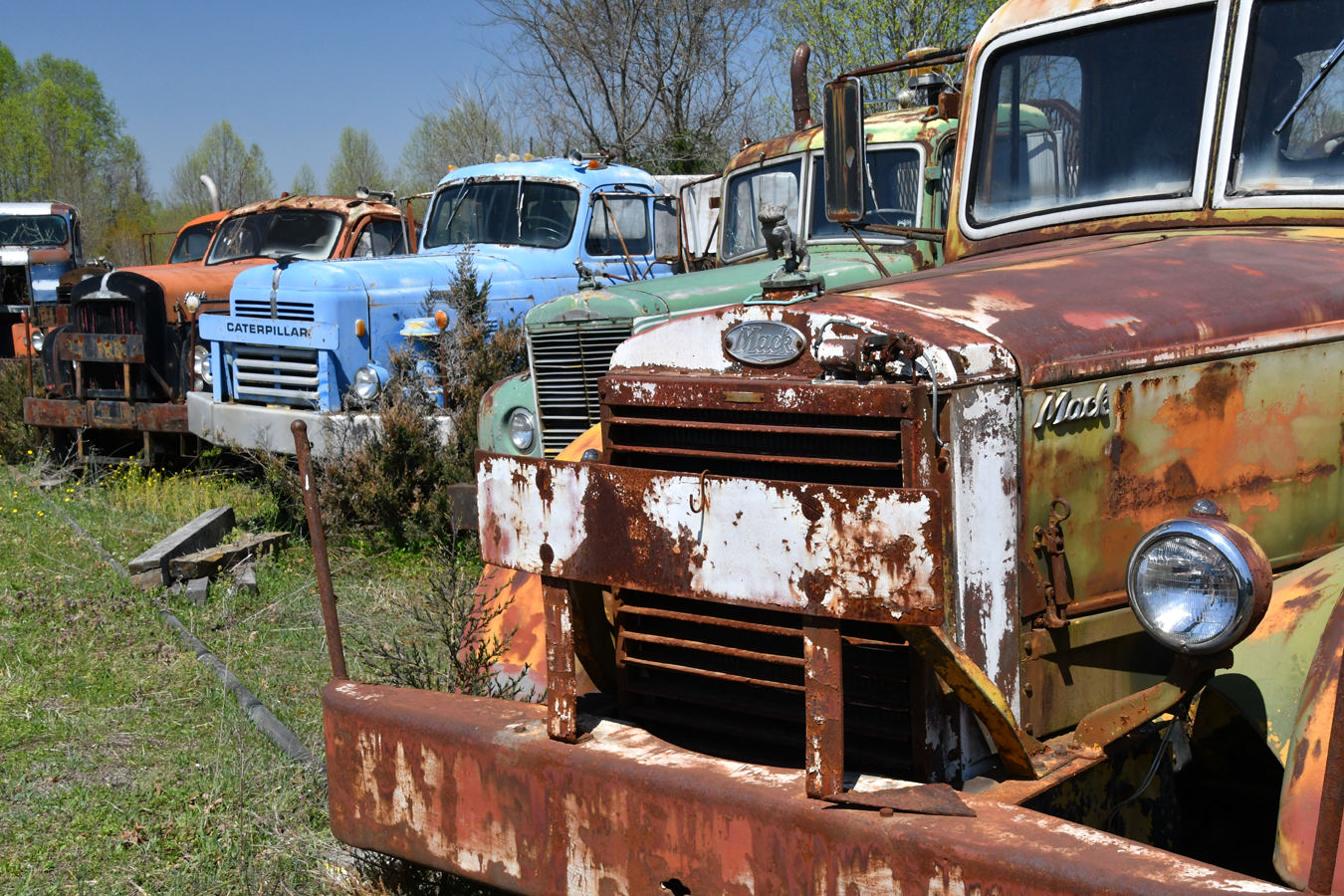
Walking across the dusty parking lot, ranks of rusted truck hulks in various states of decline faced out proudly standing shoulder to shoulder. Like a ghostly honor guard at attention for a military wedding, cab-overs, bullnoses, conventionals and sleepers with brands across a spectrum including Macks, Whites, Corbitts, Studebakers, Kenworths, Peterbilts and Fords held a silent vigil.
Of sturdy design and substance, the repurposed old brick store with its large display windows gave the feeling of a portal into the past as I approached its weathered front door.
Entering via the wooden doors to old stores seems accompanied by a comfortingly familiar soundtrack of creaking wood, squeaking hinges and, from somewhere, musical notes born of bells on a strap that lifts the spirits in a way that instills a brief heartening sense of “good old days.”
Welcoming me while cradling in her arms one of the happiest babies I have ever witnessed, Grandma Kim the part-time bookkeeper, informed me that Glenn would be back in an hour or two. Without diverting her attention from 8-month old grandson Levi, Grandma Kim said, “Glenn says you are welcome to explore to your hearts content.” I figured I had already seen pretty much all to see during my entrance. I could not have been more wrong. Much like the stone lions that serve as silent sentries at the entrance to the New York City Library, the row of historic over-the-road semi-tractors simply served as greeters to the extraordinary content that awaited a visitor with curiosity, good hiking boots and long pants.
I walked across a broad hot flat expanse paved with white stone dust that kicked up at the slightest urging of any passing vehicle. I approached an open airplane hangar-like structure on the edge of the forest. Inside hidden in the shadows of a bright high noon sun sat an eclectic array of 1930s pick-up trucks to 1960s conventional Peterbilts. A light blanket of dust blanketed everything in view.  To navigate among the entombed occupants for a closer look would be nearly impossible as the vehicles had been stored in a manner not unlike an overstuffed Manhattan parking garage. This impenetrability would be a challenge faced repeatedly during my exploration of this elephant burial ground for hard working vehicles with past productive lives spanning much of the 20th century. However, much of what awaited would be found bleaching naked in the sun.
To navigate among the entombed occupants for a closer look would be nearly impossible as the vehicles had been stored in a manner not unlike an overstuffed Manhattan parking garage. This impenetrability would be a challenge faced repeatedly during my exploration of this elephant burial ground for hard working vehicles with past productive lives spanning much of the 20th century. However, much of what awaited would be found bleaching naked in the sun.
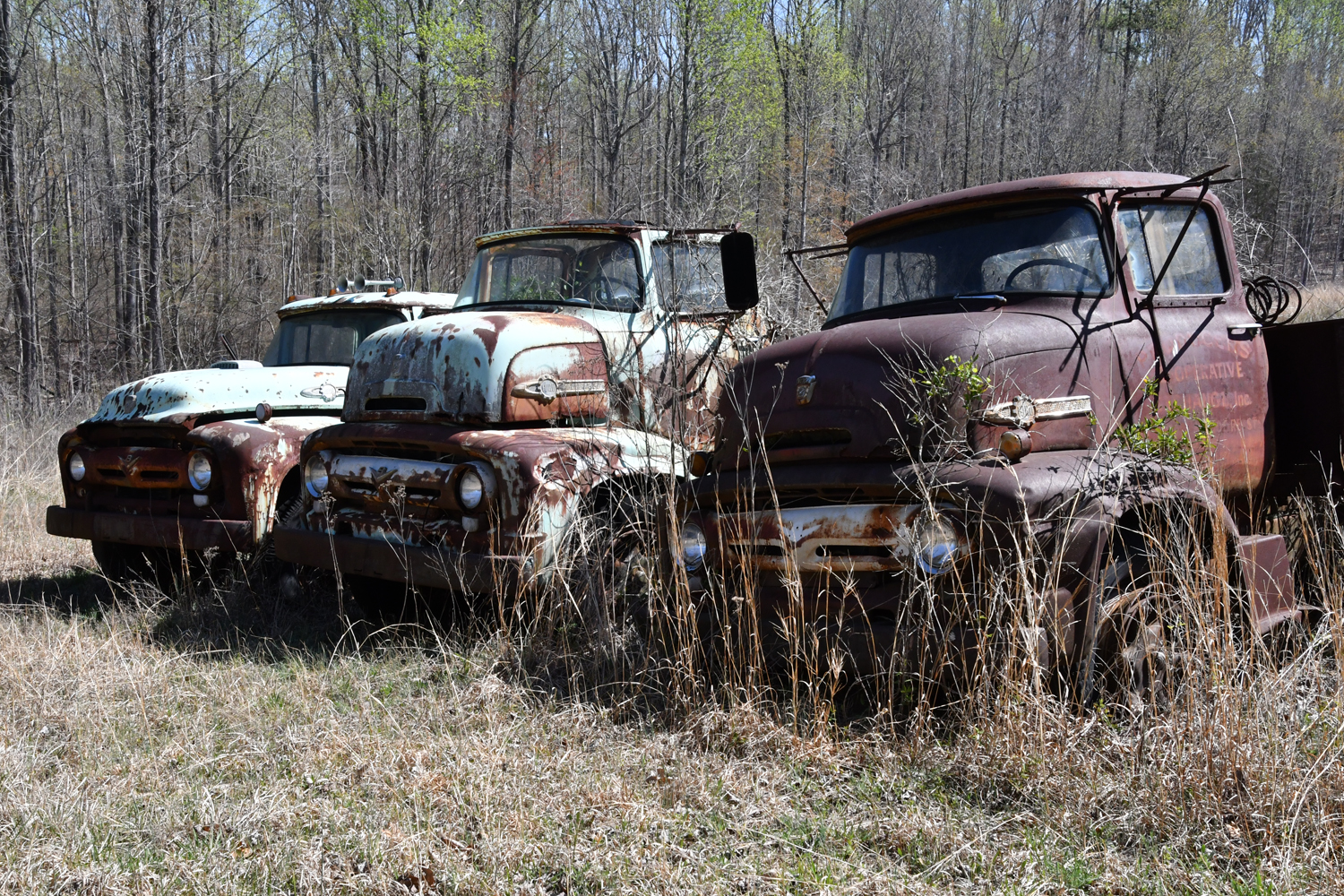
Entering an expanse richly populated with thorny bushes and clusters of weathered mid-2oth century truck carcasses, the ever present barbed shrubs clung to me like clawed groupies at a rock star convention. I persevered.
Approaching the surrounding forest served as an introduction to the immensity of what I had chosen to document. Intermingled with trees, and at times embedded in them, rows of medium and heavy duty trucks and semi-tractors populated the woods like ghosts in an abandoned graveyard. A phalanx of mid-fifties cab-over Fords led to a stand of trees that provided a resting place (final?) for a collection of late 1940s dump trucks, pickup trucks and semi-tractors. Big rigs cocooned in webs of vines could be seen in every direction. Vintage trucks of all makes and models languished ensnared in and bound by forest growth that would accelerate the inevitable dust to dust eventuality. Other trucks of all stripes baked in the sun. Burly tandem tractors sitting like great beached ships devoid of life, yet defiant, faced off against the ravages of time.

Another mammoth shed appeared chockablock with tow trucks, fire engines, stake bodies and more. Frustrated by how they had all been packed nose in from both sides rendering them un-viewable and, thus, impossible to photograph, I moved on.
I walked resigned to shredding my pants on the omnipresent barbed plant life. Big B Series Macks revealed themselves to be as common as pigeons in the park. L Series Macks enjoyed a large presence as well. A wealth of 1930s, ‘40s and ‘50s pickup trucks in all states of condition could fully populate a Cars, Coffee and Conifers all their own. I hiked and photographed for hours consistently agog at this woodland museum’s historic contents. As I returned to the office in hopes of seeing Glenn, my experience in the woods can only be described as overwhelming. Oh yes, one other interesting fact, I only had the time to explore half of Glenn’s graveyard forest. OMG!

Unprepared for my walk in the sun (Raise your hand if you remember that Dane Clark movie) the clear bright 80-degree day had left me parched and fatigued as I dragged my weary butt back to the office and Grandma Kim. “Like a bottle of water?” she asked mercifully. She went on to say that Glenn had not yet returned and she could not be sure when he would. However I could wait in the air conditioned office if I wished. Yes, very much thank you.

Glenn with the 1956 Ford F100 he drove in high school
Finally just as I got up to leave, a bright yellow Kenworth pulling a gleaming stainless steel tanker rumbled into the lot creating a swirling storm of stone dust. I was about to meet Glenn. In his early 60s, hard working, tall, in good shape with a mop of snow white hair spilling out all sides of his blue baseball cap, Glenn welcomed me with an easy neighborly manner. After first attending to his immediate business needs, Glenn said he would find fifteen minutes to spare. It somehow turned into two information rich hours.
Glenn’s grandfather had constructed the first building on this site as a general store and filling station in 1926. Standing totally restored in the corner one now finds the original towering hand crank glass top gas pump from that station.
In a short time our conversation fell into an easy rhythm. Glenn shared a bit of the local history. How his grandfather had started out as a dairy farmer. How his dad remembered that the first day he started milking, September 1, 1939, Hitler invaded Poland. The family dairy remained in operation until 1988. Transporting the milk from the dairy business evolved into the trucking business he runs today. With niceties concluded we got down to business. What about the forest of trucks Glenn?

Glenn sighed, dug deep and began saying, “The whole thing is my daddy’s doing. I and my two brothers inherited it. We never added to it.” For Drivin’ News readers Glenn’s experience closely echoes that of the “Cadillac Sisters” from an earlier Drivin’ News post “When the collection outlives the collector.” Considering the age and condition of so many of the trucks, I found it surprising that Glenn’s father started collecting trucks around 1990. Glenn says, “Some of the first trucks are ones we ran in the old says.” Glenn continues on describing when his dad really dialed up his collecting activity.
Glenn says, “When my dad got in his 60s, about 1990, he originally had a few nice old cars but then he got into the trucks which was more of what he really wanted to do. He was driven by his memory of what was running when he was young.”

With a kind of quiet resignation Glenn describes the perfect storm that fed his father’s passion for accumulating old trucks. Glenn says, “He was obsessed with getting them in here. So he would just go off if he had any free time and look. He would scour Hemmings Motor News or something like that. He would just go out and whatever he found, we would haul it back. It couldn’t be easier, we were in the trucking business. He would find a load going somewhere. Heck, we got some vintage trucks here brought back from Arizona and California.” The problem, so clearly evident today; his father didn’t have enough sheds to store them all inside. Glenn with a wistful smile says, “A lot of them aren’t inside. Fortunately most of the better ones are.”
Furthermore, the thought of keeping them running simply makes Glenn roll his eyes. He says, “We used to have a guy here that would help work on them, but my dad bought so many, no one person could keep this many vehicles running.”
When asked if he has every taken inventory of the collection Glenn says, “When my dad died in 2017, I just wanted to have an idea because we had to settle the estate. I walked this whole place and counted them.” Glenn’s count came to 245. In his desire to get the paperwork in order he says, “We had to get all the titles together. And we have all of them.” I had to go to DMV three different times because they were just so overwhelmed with all the paperwork.”
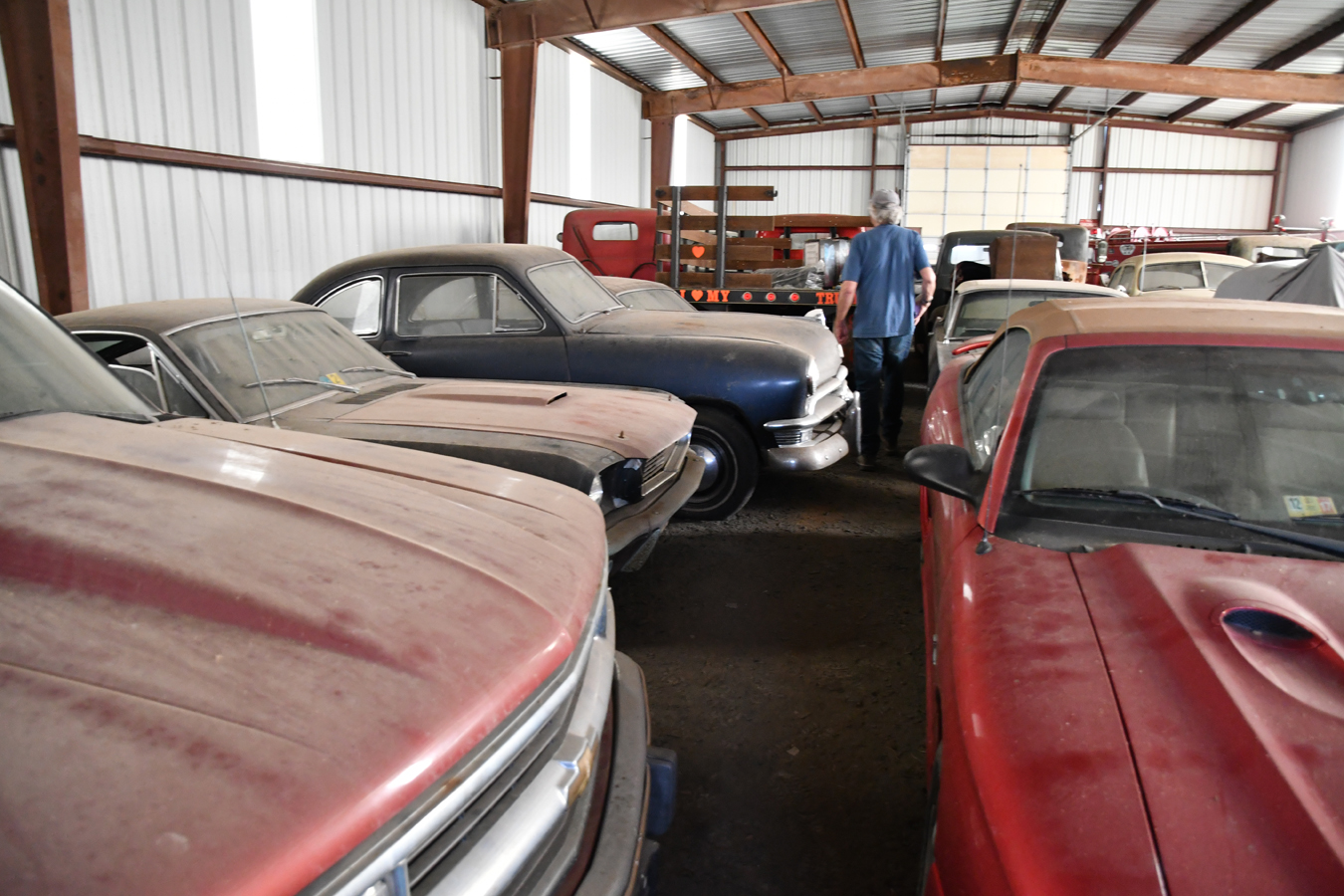
When asked what the future holds for his truck forest, Glenn adds the kicker saying that in addition to the trucks, there are the vintage cars he has stored in locked barns elsewhere. Indeed, Glenn takes me down the road to a locked warehouse containing a 1965 Hertz Shelby Mustang, light duty trucks and cars from the 1940s and ‘50s mixed in with more modern vehicles.
Clearly this 800-pound gorilla demands attention. Once again when asked his intentions for disposal of the collection Glenn, exhaling deeply, says, “We’re going to have to get rid of it all at some point. It’s just such a big undertaking that organizing the disposal of the collection and trying to run the company at the same time is really hard to do.” Glenn realistically acknowledges that he does not envision him ever having the energy to do what should be done.” Adding to the conundrum, Glenn confesses he does not have any idea as to the collections value.
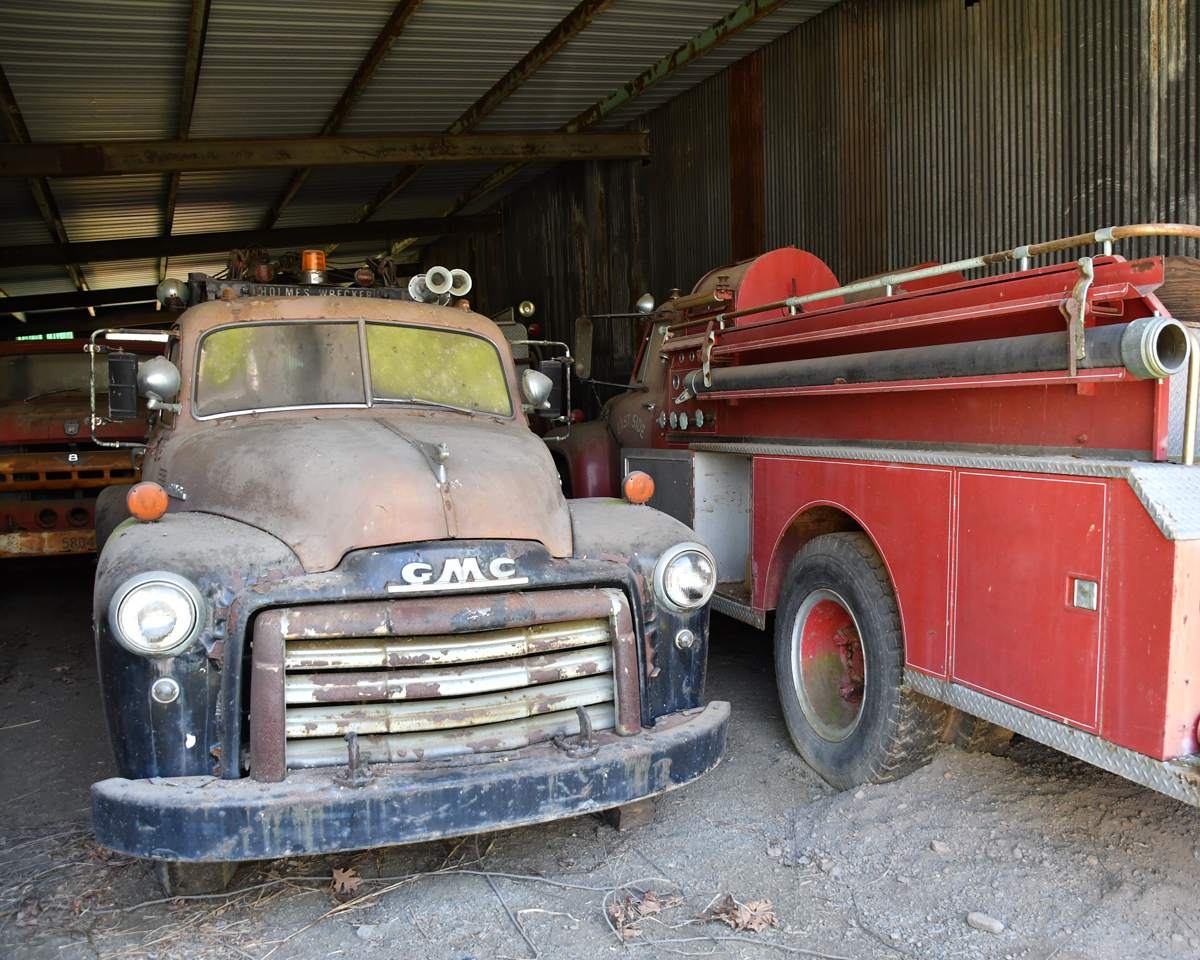
Glenn says, “People come by pretty regularly, you know, But it’s so hard. Daddy never said what he paid for anything. So you don’t have a figure in your head as to what you want. And the people interested don’t know either.” Glenn recalls his mother telling him that the first truck the father bought to start the collection, a cab-over Peterbilt, cost as much as their house. Glenn cautions saying, “This was decades ago when houses were much cheaper.” So what to do?
This did not strike me as a collection suiting the style of auction houses like Gooding, RM Sothebys, Bonhams, Mecum or the like. However, one company came to mind that normally operates in the Midwest and displays a high level of comfort in staging rural events with large and varied collections. I suggested to Glenn that Yvette VanDerBrink’s VanDerBrink Auctions might fill the bill.
Interestingly Glenn said he had spoken to Yvette. While not her normal stomping grounds, she had actually come out to see Glenn’s collection during a trip back east to visit family. Glenn says, “She took a good look. My situation is definitely her thing. That’s what she does.” Glenn said he felt she had a real good feel for the challenges the collection presented. Then Covid came to town and they have not spoken since. And so it stands today.
Glenn and his father’s collection deserve to have their day. It just needs the right auction house to save both from being lost in the woods.

Glenn came home & told me (his wife of 41 years) about this, but I never could have imagined what a well-written article this turned out to be! Great pictures too! Thank you for all the effort. I know Glenn is feeling good about telling the story of his Daddy’s collection.
Thank you so m much for the positive feedback. I am greatly pleased that Glenn felt his story was presented in a manner that gave him joy.
Amazing! Definitely submit some of your photos for Hemmings’ Abandoned Autos calendar!
Much appreciated and I like the calendar idea.